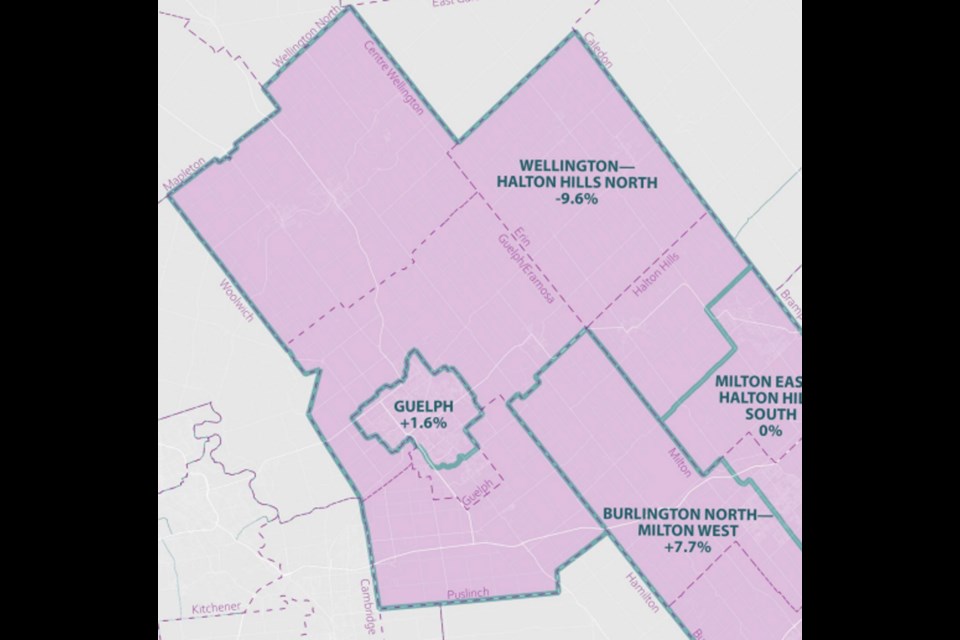Despite objections made to relocate a piece of the federal Guelph riding, the latest report from the commission dealing with the mandatory federal riding redistribution is mostly standing with keeping Guelph south of Clair Road part of a renamed riding with Wellington and parts of Halton.
But as the population continues to grow, the commission isn't ruling out a more "natural" divide of the city in the future.
The latest report from the Federal Electoral Boundaries Commission of Ontario was tabled in the House of Commons Friday, after "extensive public submissions."
It will be reviewed by the House of Commons Standing Committee on Procedure and House Affairs.
Guelph's southern boundary will be along the Hanlon Parkway, Hanlon's Creek and Arkell Road. Areas south of the line will be a part of the renamed Wellington-Halton Hills North riding.
You can see the differences between the current riding, the August redistribution proposal and the latest changes using an interactive map on the commission's website.
"Guelph is another area of high population growth," the report said. "Here, and in other areas of the province, we received a few objections to 'donut' shaped arrangements where segments from the urban district are shaved off and transferred to the surrounding rural district to achieve relative population parity.
"While such solutions tend not to generate much immediate controversy (perhaps because they stay close to the status quo), over time they may become less reasonable as suburban populations continue to grow."
The initial riding boundary change map was released in August, and generated mixed emotions but overall respect for the process by community leaders.
The report also came out in the middle of a municipal election cycle.
Cam Guthrie got the concept from an equity and proportional point of view, after not understanding at first why they'd mess with a system where there's one representative at each level of government for the city.
"We are a growing, not just country, not just province, but we are growing as a city as well," he said last summer in the middle of his re-election bid as Guelph mayor.
"We are already over the normal population numbers that would be usually equated for representation from an MP."
The population of Guelph in 2011's redistribution was 121,688. It has since grown to a population of 143,740, according to the latest Census data.
The new boundary presented in the latest report has Guelph's riding population at 118,498, leaving about 25,000 people in the larger, more rural riding.
Dominique O'Rourke, who ended up getting re-elected in Ward 6, showed concern for the shift last August.
She told GuelphToday progress was made to increase the representation for the south end of Guelph, and the proposed new boundary "fractures that."
The Wellington-Halton Hills riding also had some "modest adjustments" made.
For one, the commission has scrapped the Wellington-Halton name that was initially proposed, in favour of the Wellington-Halton Hills North name.
But as for the look, a piece of Milton – which was initially going to be part of the renamed riding – will be shifted back over to a riding with parts of Burlington. To the north, East Garafraxa will remain part of a new Dufferin-Caledon riding, after the commission initially had it included in Wellington-Halton.
